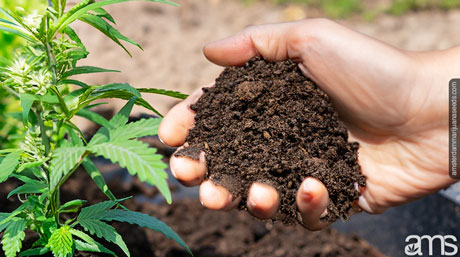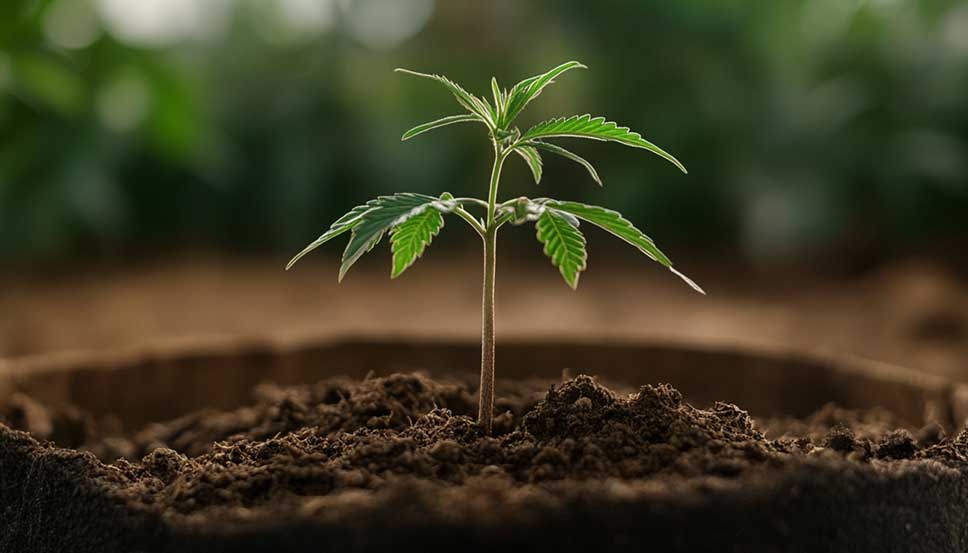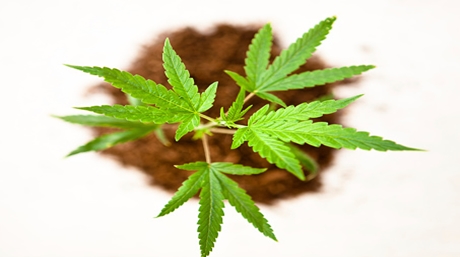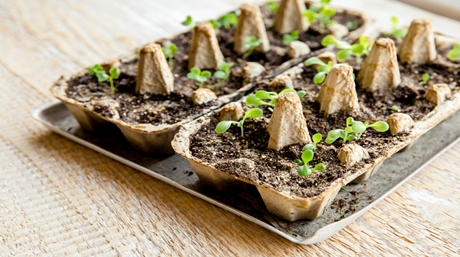In this article, you will find answers to the following questions: What are the key steps involved in soil preparation? How can I effectively cultivate cannabis? What are the benefits of using nutrient-rich soil for growing plants? What are the important considerations, for outdoor growing of cannabis? What advantages do organic fertilizers offer in plant cultivation? Why is monitoring soil pH levels important in cannabis cultivation?
I’m here to share my experiences and knowledge on the exciting journey that is cannabis cultivation. To all green thumbs and beginners alike, this guide on “What are the essential steps for preparing the soil in outdoor cultivation to create a fertile and nutrient-rich environment for marijuana plants?” is crafted with much care and attention to detail. So, strap in, and let’s dive into the wonderful world of growing marijuana.
Before we embark on this journey together, I’d like to mention the importance of starting with the right cannabis seeds. The decision to buy cannabis seeds is the first and one of the most vital steps in cannabis cultivation. This choice determines the character, attributes, and overall potential of your plants. But remember, even the most superior marijuana seeds, can’t thrive without the right environment – and that’s precisely what we are about to delve into.
When it comes to outdoor growing, one thing is of prime importance: the soil.
Understanding your soil is the first crucial step to successful marijuana cultivation. Contrary to popular belief, soil is not just ‘dirt’. It’s a complex ecosystem teeming with life, providing the essential nutrients that your cannabis seeds need to grow into sturdy plants. Growing marijuana in nutrient-rich soil, therefore, is vital for a healthy, abundant crop.
Now, what exactly is nutrient-rich soil, you ask?
In simple terms, nutrient-rich soil is fertile, healthy soil loaded with essential nutrients that plants need to grow. It’s the dream home you create for your cannabis seeds. It’s well-structured, well-aerated, and boasts a harmonious balance of essential elements like nitrogen, phosphorus, and potassium. But how do we achieve such soil composition? That’s where soil amendments come into the picture.
Soil amendments to enhance its physical properties
They can be organic (derived from plant or animal matter) or inorganic (made from mined minerals). These amendments work to improve soil fertility and structure, thus helping your cannabis seeds grow into strong, healthy plants. When we talk about organic amendments, one name shines above the rest: organic fertilizers.

Slow release, organic fertilizers – gradually provide nutrients
They maintain a balanced diet for your cannabis seeds. They come in various forms, such as bone meal, compost, worm castings, and manure, to name a few. Organic fertilizers improve soil structure and water retention capabilities, two crucial factors in successful marijuana growing. And speaking of compost, composting cannabis is a splendid way to recycle your plant waste and create nutrient-rich soil.
Composting cannabis environmentally friendly
Composting involves the decomposition of organic matter, including cannabis plant material, in the presence of air and water. It is very good for the environment
Compost makes soil nutrients rich
This process produces a nutrient-rich soil conditioner that improves the soil’s structure, water holding capacity, and nutrient content. It’s an excellent way to give back to nature while preparing for your next cannabis growing season.

Nutrient-rich soil doesn’t end with soil amendments and organic fertilizers.
There’s another critical aspect of soil preparation we need to focus on – Soil pH levels.
Soil pH refers to the acidity or alkalinity of the soil. It is a significant factor in determining the availability of nutrients in the soil. Maintaining the right pH levels ensures that your cannabis plants can absorb the nutrients they need efficiently. For cannabis, slightly acidic soil with pH levels ranging from 6.0 to 7.0 is ideal. A soil pH testing kit is an essential tool for every grower interested in outdoor growing.
Now let’s discuss drainage management. This aspect of soil preparation may sound technical, but it’s not that complicated when you understand the basics. Proper drainage is crucial for healthy cannabis growing. Without it, water can accumulate, leading to waterlogged conditions that deprive your plants’ roots of oxygen and promote root rot, a sure death sentence for your plants. So, while preparing your soil, remember to create a mix that drains well but still retains sufficient moisture.
The next step is mulching. Mulching techniques are often overlooked in cannabis cultivation, especially in outdoor growing. However, applying a layer of organic material (like straw, wood chips, or leaf mold) to the surface of your soil can protect it from harsh weather, reduce weed growth, and improve soil moisture and fertility. As the mulch decomposes, it gradually releases nutrients into the soil, contributing to your nutrient-rich soil preparation.

And now, let’s dive into an aspect of marijuana cultivation that’s sometimes underemphasized but is of prime importance in our quest for the perfect soil – the art of crop rotation.
As we aim to create nutrient-rich soil for our cannabis plants, we should also keep in mind the importance of preserving our soil’s health for subsequent cultivation. One practice that helps maintain soil fertility is crop rotation.
Crop rotation involves growing different types of plants on the same land in sequential seasons. It’s an organic method of controlling pests and diseases, and it aids in the conservation of soil structure and nutrient content. Growing marijuana in rotation with other crops helps prevent the depletion of vital nutrients in your soil, ensuring the soil remains fertile and rich for future cannabis growing seasons.
By this stage, our nutrient-rich soil is ready, the pH levels are adjusted, and we’ve managed the drainage well. We’ve also decided on the rotation crops and have our mulching techniques handy. But hold on, we’re not quite done yet! There’s one more thing to consider before you finally plant your cannabis seeds : Understanding and preparing for pests and diseases.
Unfortunately, our beloved cannabis plants are not immune to pests and diseases. However, as the saying goes, “Prevention is better than cure,” rings true in cannabis cultivation too. Many pests can be deterred by merely maintaining a clean growing area. Regularly inspect your plants for early signs of infestation. A good rule of thumb is to always have an organic pest control solution at the ready. Having a pest control plan before you even start planting is an excellent way to avoid pest-related disasters.
To summarize, outdoor growing of cannabis is an art, a science, and a labor of love. From the moment you decide to buy cannabis seeds to when you finally harvest your buds, every step holds its challenges and rewards. To create a fertile and nutrient-rich environment for cannabis plants, understanding and preparing the soil is key. This includes enhancing your soil’s nutritional content, managing pH levels, ensuring good drainage, utilizing mulching techniques, planning for crop rotation, and being prepared for pests and diseases.
By taking the time to create the perfect soil for your plants, you give your cannabis seeds the best start possible. You not only nurture the plants but also contribute to a sustainable and healthy ecosystem. Marijuana cultivation is a journey, and each grow, teaches us something new. I hope this guide helps you on your path to growing healthy, bountiful cannabis plants. Remember, good growers grow great plants, but great growers also enrich the earth.
While this guide provides a broad overview, always remember that each grow, is unique. You might need to adapt and experiment with these practices based on your specific circumstances. That’s part of the fun and challenge of growing marijuana!
So, go on venture forth, into this beautiful journey of cannabis cultivation. May your green thumbs get greener, and your cannabis plants grow healthier. As you nurture your plants, you’ll find they nurture you back. Whether it’s your first time or you’re a seasoned grower, the joy of watching your cannabis seeds sprout and grow is one of life’s true pleasures.
FREQUENTLY ASKED QUESTIONS
- What are the key steps for soil preparation in cannabis cultivation?
Soil preparation involves enhancing soil fertility using organic amendments, ensuring proper pH levels (6.0-7.0 for cannabis), managing drainage, and applying mulching techniques to retain moisture and improve soil structure. Crop rotation and composting cannabis waste are also essential for maintaining long-term soil health. - Why is nutrient-rich soil important for growing cannabis?
Nutrient-rich soil provides essential elements like nitrogen, phosphorus, and potassium that cannabis plants need for strong growth. It supports healthy root development, improves water retention, and ensures the plants receive a balanced supply of nutrients over time. - How can I effectively compost cannabis waste?
Composting cannabis waste involves decomposing organic material, including plant trimmings, in the presence of air and water. This process produces a nutrient-dense soil conditioner that enhances soil structure and fertility, making it ideal for future cannabis cultivation.
















